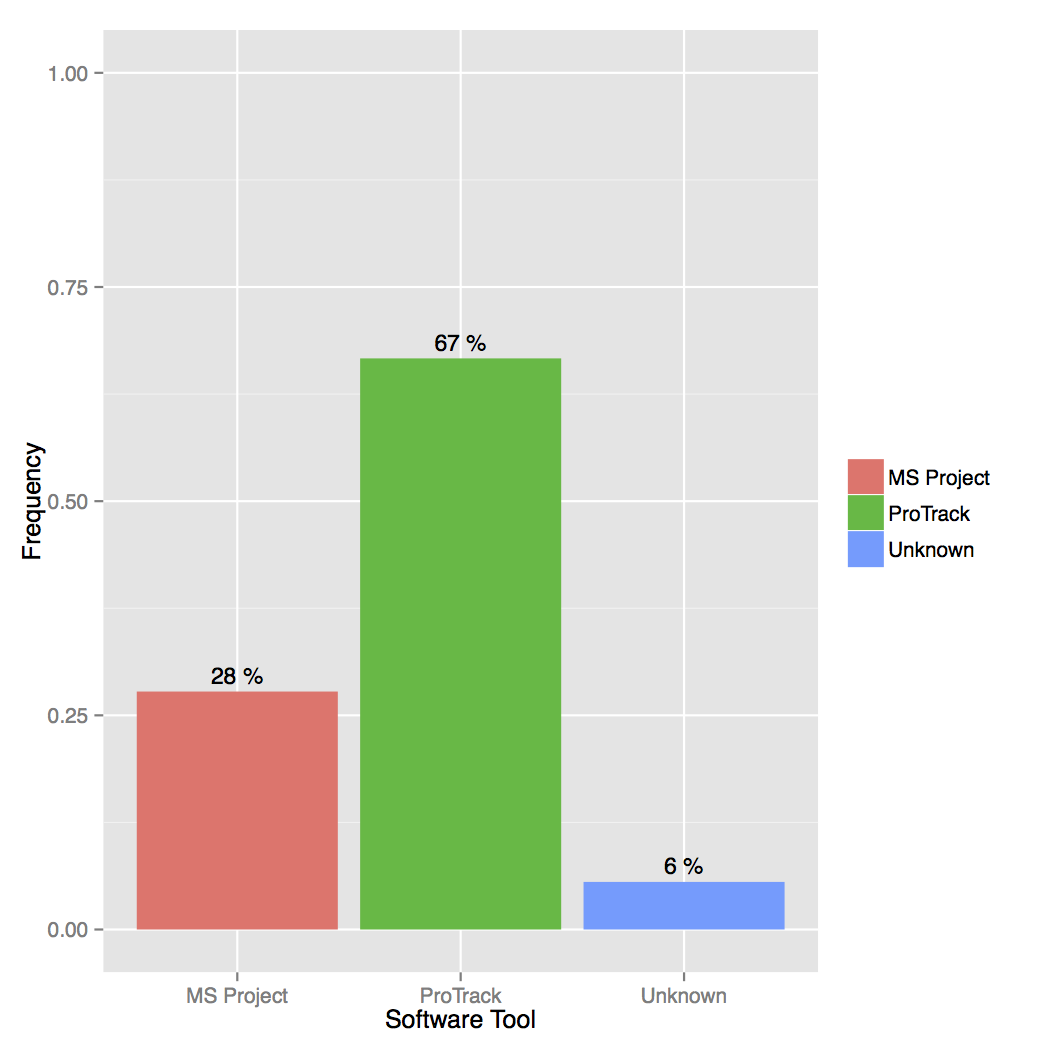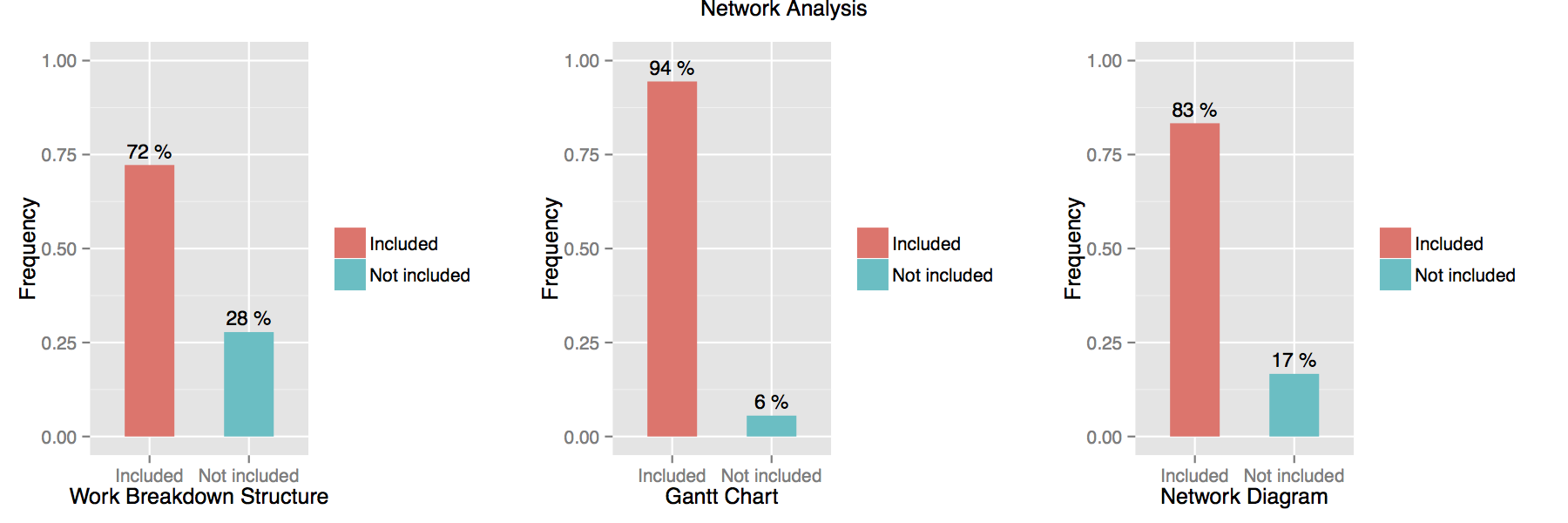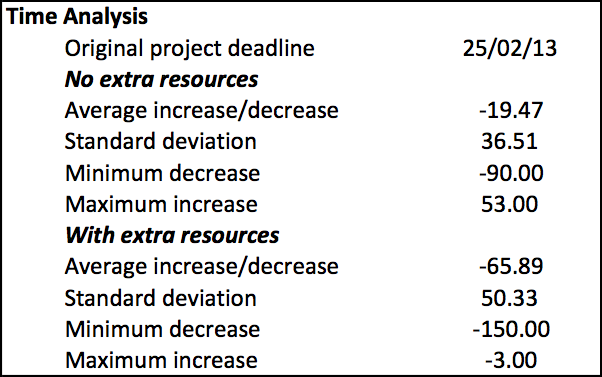Project scheduling at Ghent University - A case study (04/2013)
The Mutum Paraná II bridge, Case B
On Tuesday, April 16, 2013, 116 students had to solve the Mutum Paraná II bridge case study (part B) as part of the course “Project Management” at the faculty of Engineering of Ghent University. The aim was to analyse project data and to present the results to the project team of the company in a written report. Below you find some key metrics of their analyses:
Software use
67% of the students used ProTrack, 28% relied on MS Project and 6% did not specify which software tool they used.

Network analysis
The graph below shows the percentage of students who thought it was relevant to display the work breakdown structure (WBS) and/or the network diagram and Gantt chart.

Resource Management
The analysis of the use of resource is done by 44% of the students by focusing on the cumulative resource requirements. 28% of the students use the resource-constrained project leveling option based on various priority rules (see also the detailed table for the use of these rules). 22% of the students mention the use of fixed duration or fixed work activities (or used both), while 72% do not mention any details.
 

Students who used priority rule based scheduling (28%) often do not specify has they have constructed their schedule (78%). A few simply used all the rules available in the software tool (6%). Only a few have chosen to use one of the rules to solve resource over-allocations:
- Earliest Start (ES)
- Greatest Rand Positional Weight (GRPW)
- Latest Processing Time (LPT)
More information on the specific details of these rules can be found at PMKC.

Risk analysis
Only 11% of the students extended their scheduling analysis with schedule risk analysis.

Time is money
Time is often the critical objective when constructing schedules, and therefore, the use of software should focus on this time minimizing target. The summary table below gives some statistics on the final project deadline (compared to the original project deadline of 25/02/2013) using the current set of resources and under the use of extra hired resources (increase and decrease compared to the original deadline is given in days).

Well done!
